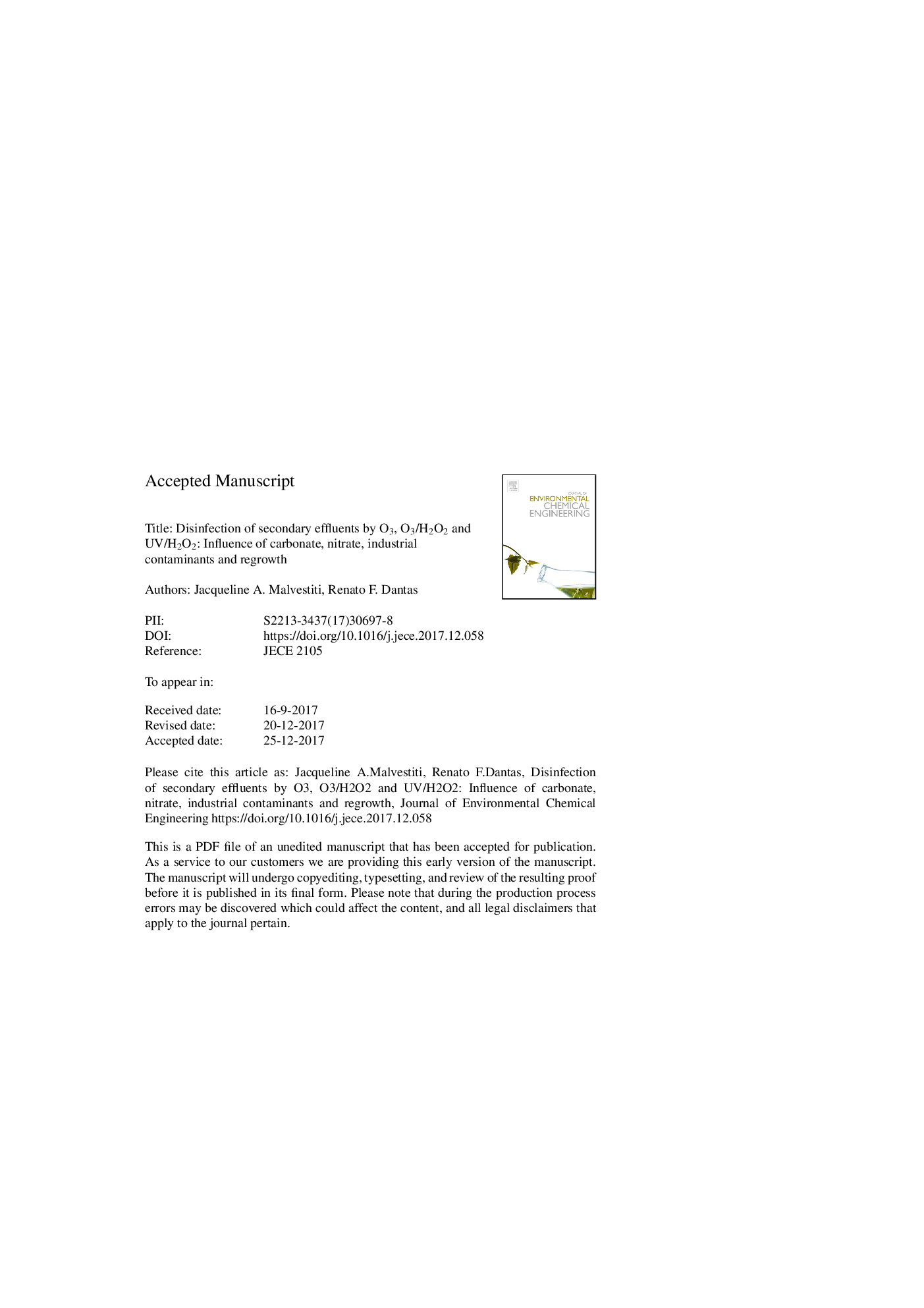| Article ID | Journal | Published Year | Pages | File Type |
|---|---|---|---|---|
| 6664113 | Journal of Environmental Chemical Engineering | 2018 | 21 Pages |
Abstract
The objective of this work was to verify the efficiency of O3, O3/H2O2 and UV/H2O2 treatments to disinfect municipal effluents as well as to verify the influence of carbonate, nitrate and industrial contaminants on the disinfection and reactivation of total coliforms and Escherichia coli after the treatments. The results showed that all AOP treatments were affected by the presence of carbonate and nitrate. In general, they reduced the inactivation of total coliforms and E. coli. However, carbonate was the main inhibitor of disinfection. Ozone disinfection showed to be more affected by scavenging compounds than the other methods The choice of the disinfection indicator is very important for the correct assessment of disinfection reduction by scavengers. Industrial contaminants also acted as radical scavengers. However, their influence was very limited. To assess the bacteria reactivation after the treatments the wastewater was kept in bottles for 24â¯h. Among the three tested oxidation processes, the ozone-alone was the less efficient regarding the bacteria reactivation. It seems that the presence of scavenging can change the mechanism of inactivation and promote faster regrowth.
Related Topics
Physical Sciences and Engineering
Chemical Engineering
Chemical Engineering (General)
Authors
Jacqueline A. Malvestiti, Renato F. Dantas,
